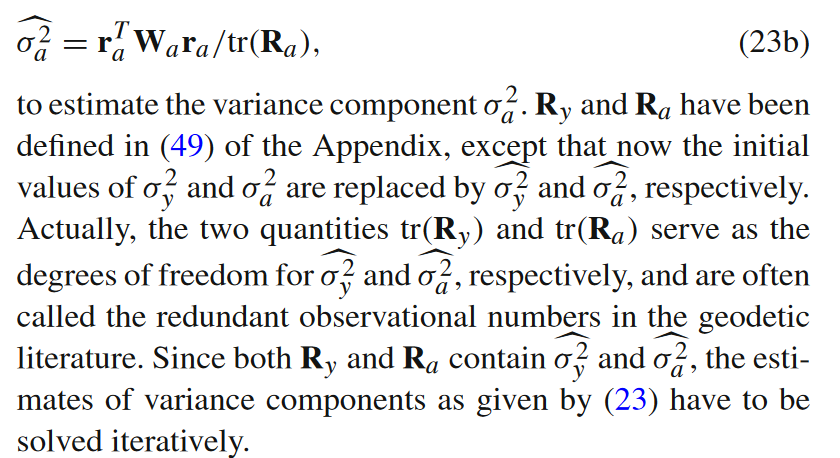Note: I'd like to make the cited document accessible to everyone but I am unsure how to do this.
I am a bit confused by this 2014 article "Variance components in errors-in-variables models: estimability, stability and bias analysis".
My point of confusion is this: Isn't it well known that Deming regression cannot identify the ratio of the two variances (of X and Y) itself but instead must be conditioned on the given ratio. So why was it an open question about more generalized versions of the problem discussed in the paper. They write
Although total least squares has been substantially investigated theoretically and widely applied in practical applications, almost nothing has been done to simultaneously address the estimation of parameters and the errors-in-variables (EIV) stochastic model. We prove that the variance components of the EIV stochastic model are not estimable, if the elements of the random coefficient matrix can be classified into two or more groups of data of the same accuracy. This result of inestimability is surprising as it indicates that we have no way of gaining any knowledge on such an EIV stochastic model. We demonstrate that the linear equations for the estimation of variance components could be ill-conditioned, if the variance components are theoretically estimable. Finally, if the variance components are estimable, we derive the biases of their estimates, which could be significantly amplified due to a large condition number.
But why is it surprising? Also I don't fully understand what they are saying because let's say I only have one independent (x) variable, then my understanding is that because there is only one variable you cannot possibly meet the condition that two x variables (x1 and x2) have the same variance component which is the condition under which they imply the variance components aren't estimable. This a little bit implies that maybe in this special case where there are just two variance components, one for y and one for x that maybe they will be estimable.
They actually do address this specific case later in the paper, but I simply am too uneducated to understand their results:


So these make it look then like the variance components for Deming regression do not need to be known since they can be estimated with the above equations, but their analysis continues for like 3 more pages and I simply don't even understand their conclusion on whether it is or is not possible much less the derivation of their conclusion. In fact, I cannot even tell if the analysis they present in the rest of the paper has anything to do with the special case they call attention to above.
And if it is true that the variance ratio between the two variables in a Deming regression is not required then why is it common practice to require the ratio be specified?
